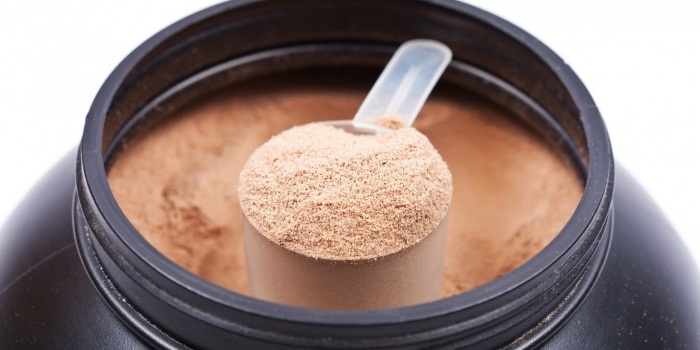Creatine or 2- (methylguanidino) -ethanoic acid is a nitrogen-containing carboxylic acid that is involved in energy metabolism in muscle and nerve cells. It is the main representative of the group of ergogenic components of sports nutrition. It is produced in various chemical forms (monohydrate, hydrotatrate, alpha-ketoglutarate, tricreatine malate). In the bodybuilding world, creatine is widely used as a sports supplement to increase strength, muscle mass and short-term anaerobic endurance with proven safety.
The history of creatine
Creatine was discovered in 1832 by the French scientist Chevreul, who discovered a previously unknown component of skeletal muscle, later he called creatine, from the Greek kreas, which means “meat”.
After Chevreul’s discovery of creatine in 1835, another scientist, Lieberg, confirmed that creatine is a common component of mammalian muscle. Around the same time, researchers Heinz and Pettenkofer discovered a substance called “creatinine” in urine. They hypothesized that creatinine is formed from the creatine stored in the muscles. Already at the beginning of the 20th century, scientists conducted a number of studies on creatine as a dietary supplement. It has been found that not all creatine taken by mouth is excreted in the urine. This indicated that some of the creatine remains in the body.

Researchers Folin and Denis in 1912 and 1914 accordingly, it was determined that the addition of creatine to food increased the content of creatine in muscle cells. In 1923, Hahn and Meyer calculated the total creatine content in a man weighing 70 kg, which was found to be approximately 110 grams. Already in 1926, it was experimentally proved that the introduction of creatine into the body stimulates the growth of muscle mass, causing a retention of “nitrogen” in the body. In 1927, researchers Fiske and Sabbarow discovered “phosphocreatine,” which is a chemically bound molecule of creatine and phosphate that accumulates in muscle tissue. Free forms of creatine and phosphorylated phosphocreatine are recognized as key metabolic intermediates in skeletal muscle.
The first study to clearly show the effect of creatine in humans was carried out in the late 1980s in the laboratory of Dr. Eric Haltman in Sweden. A study found that consuming 20 grams of creatine monohydrate daily for 4-5 days increased muscle creatine content by about 20%. The results of this work, however, were only published in 1992 in the journal Clinical Science, since then the history of creatine intake in bodybuilding begins.
The idea of ”loading” and subsequent maintenance dosages was developed by Dr. Greenhoff at the University of Nottingham in 1993-1994, and the research results were published in collaboration with Dr. Haltman. Dr. Greenhoff and colleagues conducted muscle tissue studies to investigate the effects of creatine loading.
In 1993, the Scandinavian Journal of Medicine, Science and Sports published an article showing that creatine supplementation can cause significant increases in body weight and muscle strength (even in one week of use) and that this drug is the basis for improved training results. high intensity.
In 1994, Anthony Almada and colleagues conducted research at the Texas Women’s University. The main goal of the research was to demonstrate that the increase in body weight with the use of creatine is due to the increase in “lean” muscle mass (without the participation of fat) and that the use of creatine leads to an increase in strength (bench press results were checked). The research results were published in the journal Acta Physiologica Scandinavica.
Since 1993-1995 Among the newest sports nutrition in bodybuilding, there is no nutritional supplement more popular than creatine. In fact, from that time on, the triumphant march of creatine began across countries and continents in a variety of sports.
In the early 90s of the last century, low-potency creatine supplements were already available in Britain, and it was only after 1993 that a quality creatinine supplement for increasing strength was developed, available to the general consumer. It was released by Experimental and Applied Sciences (EAS), introducing creatine under the trade name Phosphagen.

In 1998, MuscleTech Research and Development launched Cell-Tech, the first supplement to combine creatine, carbohydrates, and alpha lipoic acid. Alpha Lipoic Acid has been shown to further increase muscle phosphocreatine and total creatine concentration. Studies in 2003 confirmed the effectiveness of this combination, but it must be admitted that the level of effectiveness is quite low.
But Sci Fit scientists went further and developed in 2001 a new type of creatine treatment – Kre-Alkalyn, “breaking the creatine code”, as they wrote about this development in scientific journals in the world of sports and bodybuilding, and having patented this invention, having received patent No. 6,399,611 … Three years later, this news was replaced by a new one, since the failure of this approach was proved to be a failure.
Another important event took place in 2004, when the world first heard about creatine ethyl ester (CEE ), which immediately exploded in popularity. CEE is now widely used and manufactured by many companies alongside creatine monohydrate. But its effectiveness compared to creatine monohydrate has not been proven.
In addition, in the last decade, Tri-Creatine Malate, creatine malate, the ethyl ester of creatine malate, creatine alpha-ketoglutarate and some other forms of creatine have been synthesized, but they have not received much distribution due to their low efficiency.
The biological role of creatine
Creatine is a natural substance found in the muscles of humans and animals and is required for energy metabolism and movement. The human body contains about 100-140 g of this substance, which serves as an energy source for muscles. The daily consumption of creatine under normal conditions is approximately 2 g. Creatine is as important to life as protein, carbohydrates, fats, vitamins and minerals. Creatine can be synthesized by the body independently from 3 amino acids: glycine, arginine and methionine. These amino acids are protein components.
In humans, enzymes involved in creatine synthesis are localized in the liver, pancreas, and kidneys. Creatine can be produced in any of these organs and then transported by the blood to the muscles. Approximately 95% of the total creatine pool is stored in skeletal muscle tissues.
With increasing physical activity, creatine consumption also increases, and its supply must be replenished through diet or through the body’s own natural production.
The decisive factor for achieving high results in sports is the body’s ability to release large amounts of energy in a short period of time. In principle, our body constantly receives energy by breaking down carbohydrates and fat.

The immediate source of energy for the contraction of skeletal muscle is a molecule called ATP (adenosine triphosphate). The amount of ATP immediately available is limited and decisive for sports performance.
All fuel sources – carbohydrates, fats, and protein – are first converted through various chemical reactions to ATP, which is then available as the only molecule that the body uses for energy. When ATP releases energy to provide energy for muscle contractions, the phosphate group is cleaved off and a new molecule called ADP (adenosine diphosphate) is formed. This reaction is reversible with creatine phosphate, an energy-rich substance.
Creatine combines with phosphate in the body to form phosphocreatine, which is a determinant of energy production in muscle tissue.




